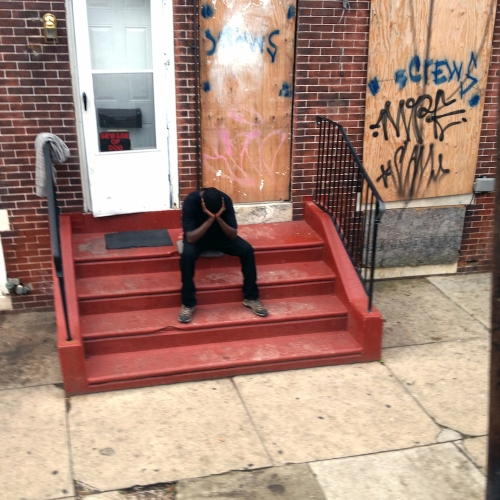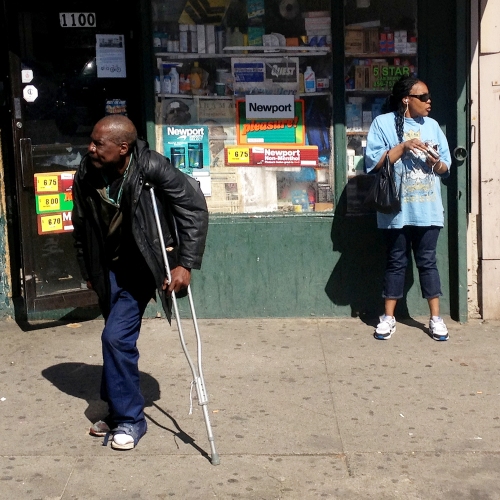You are currently browsing the tag archive for the ‘firefighter’ tag.
PREAMBLE: PHOTOGRAPHING FROM WITHIN
One of the most interesting street photographers in America right now is Gabe Angemi. He shoots daily and prolifically. He makes pictures with an iPhone, mostly, but on other cameras too. Angemi is a firefighter in Camden, New Jersey. His profession allows him to get close.
Elevated angles of passing moments in some of Angemi’s photos are reminiscent of images in the many curated Google Street View (GSV) projects. GSV projects tend to divide people. You love them or you hate them. Doug Rickard’s A New American Picture was one of the earliest, one of the best promoted and most divisive of the GSV projects. Why am I mentioning this? Well, Rickard got some flak because he drove-by shot America’s poorest neighbourhoods from behind his computer screen.He didn’t hit the streets himself, but drifted past scenes from the up-high vantage point of a 15-eyed Google car camera rig.
In his look at inequality in America, Rickard *travelled* the streets of Camden. Some of Angemi’s images may look similar but the intent and engagement is vastly different. I’m somehow reassured to know that Angemi is getting down of his rig, chatting with locals, watching the ebb and flow of energies, and shaping the city. He’s also responding to emergencies, securing vacants and putting out fires.
Angemi’s diaristic portrait of the city is raw. But it reflects a place in which 40+% of the population live below the poverty line; a city hall from which three past mayors have been convicted of corruption; a city which can’t support its own schools; and a city in which police misconduct was so rife that law enforcement was placed in the receivership of state forces.
Camden has one of the highest crime rates in the U.S. and is often described as the most violent city in America. In 2012, Camden had 2,566 violent crimes per 100,000 people which is five times the national average. Camden is a rough town, but it is more than its poverty. Angemi consistently puts the hardships and everyday events into a wider context.
Whereas Rickard simply restated that poverty exists in America, and in Camden in particular, Angemi is seeing and sharing it daily. He’s mapping change in Camden and he’s also trying to make it a safer place. That makes him one of the most interesting street photographers in the country.
Angemi pushes his stuff out on a popular but private Instagram account, @ANGE_261.
Scroll down for our Q&A
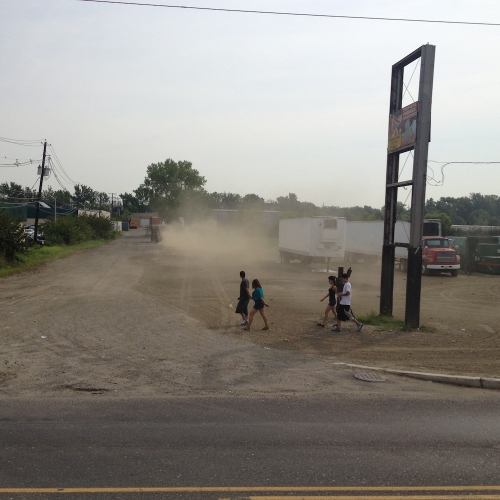
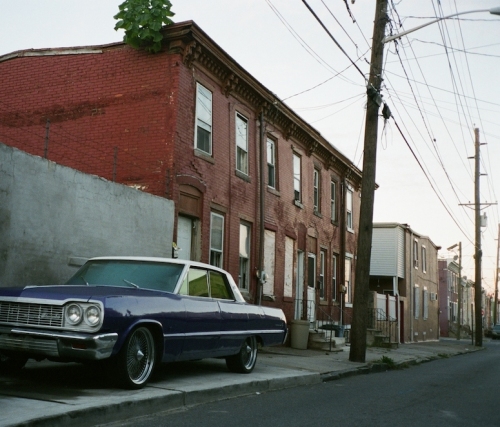
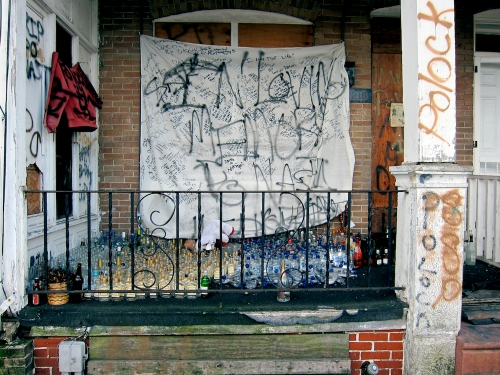
Q&A
Prison Photography (PP): Are you always using an iPhone? Are you always shooting on the job? Or do you use other cameras and venture out other times?
Gabe Angemi (GA): Not always. But the iPhone is just always there you know? It’s super easy. Occasionally though, it sucks. I also use a 35mm Olympus camera I got from Clint Woodside at Dead Beat Club, and a couple of Polaroid cameras. I’ve been using a Fuji X100 mostly as of late.
Recently, I gave Bruce Gilden and some friends from Magnum a tour of Camden, for a few hours on back-to-back days. I can’t shoot like that; the big cameras and the assistant will never suite me. I love that it’s out there and artists like Bruce are killing it, but I’ll keep making it work with what I got. I suppose that points to why the iPhone works so well for me, it’s just easiest. My photography is more timing, perspective and place than anything else. I suppose I just never had the money to buy a camera that’s *serious*. One day I’ll get a legit one I suppose.
PP: How long have you been a Camden firefighter?
GA: I’ll have been on the job in CMD for 16 years come December. I was recently promoted out of the Rescue Company to Engine Co. 11 in the city’s Cramer Hill section.
PP: How do you take pictures while you’re on call?
GA: I take my job very seriously. Being Johnny on the spot at a fire scene doesn’t jive well with making good photos. I’ve started making photos more and more off duty. The access though — it was invaluable to get me where I could be making interesting photos.
When I was shooting at work years ago, I needed quick and easy so it never interfered with my duty or performance. Hence, the iPhone. Clearly, I can’t have a big ass camera around my neck while I’m fighting fire!

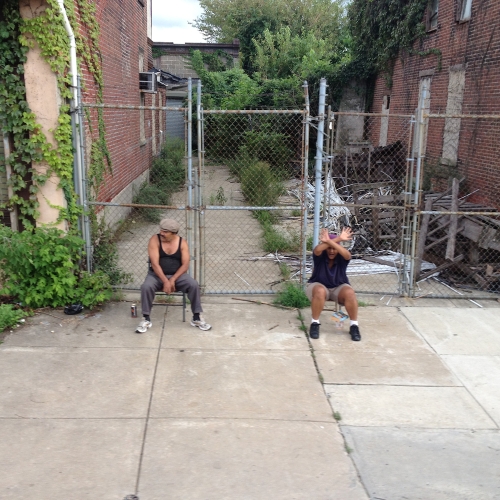
GA: I rarely shoot on the job these days, it is illegal per department policy now. If I take a photo on duty it is with the intent of using it for a training presentation or a PowerPoint.
PP: Because you train other firefighters in fire abatement, right?
GA: Right. And nothing but harmless stuff goes on my social media. Ethical considerations are a big factor. Problems are to be avoided. I had to talk to an attorney about it extensively a few years back.
PP: When did you decide to start shooting in the city?
GA: I started shooting the day I was hired, using an old film camera. Maybe even before that, when I’d stop in a firehouse to see my dad.
Initially, I was just shooting and documenting “us.” Somewhere along the line, I turned the camera towards the city, the issues, the people, the good, the bad. It all seems so normal now but its surely not. Camden’s a fascinating place. I like to be involved in friction, and trying to solve it. I shoot the friction in places that used to be what America was all about, and still is, but for entirely different reasons.

PP: Camden is a tough town. Lots of surveillance, lots of blocks where tensions between citizens and cops are high. How do you and your uniform and your camera fit into that?
GA: I think that collectively, the fire department is looked upon endearingly. The residents have family and friends on the job. The locals know we are not there to break their balls or be indignant. We’re just there to help.
It’s funny how most of the outsiders are the ones who confuse us with the police while were on the street. I mean, I get it, it’s a dark blue uniform, but we are clearly not the police; we do not carry weapons.
Anyone who sees us — from the corner boys to the politicians — should know we don’t judge, assume or push buttons that aggravate anything. We mind our own business, we just want to help.
I’m not dumb though, I’m not always going to fit in, and clearly I’m not going to try to fit me and my camera into a spot that isn’t going to work out. ‘Round pegs, round holes,’ as one of our Deputy Chiefs always said. It carries over from my career to my art.
Tensions are indeed high, and yes, the city is heavily surveilled. The municipality and county had acquired some state of the art detection and monitoring equipment by way of federal grants. The whole city sometimes feels like a prison. Cameras are everywhere, and there’s now a shot detection system that can pinpoint gunfire down to a city block.

GA: Tensions aren’t necessarily a consistent thing, but more like an ebb and flow depending on what’s going on in a particular part of town. Some spots are always hot, others rise and fall. I’m no authority mind you, and I won’t claim to be an aficionado on the vibe on the street between citizens and the law. I pay close attention, but I’m not in any position to really know anything about the police and their plight. It’s not my job. All I really know about them is they have a tough job, and it’s damn dangerous. So is ours.
PP: What’s the reactions of the locals?
GA: My camera gets me smiles, waves, fun poses, friends, conversations and past barriers or preconceived notions. It also gets me dirty looks, threats and projectiles. Obviously, I prefer the former, but just like my job, I take the good with the bad.


PP: What’s your approach?
GA: I ask sometimes to shoot, sometimes I don’t. I build relationships with people I meet on the street when I’m working and try to create a bond or trust so that I can go to their space and photograph them. Sometimes it takes time, other times it can go down right away. Personalities abound; it’s very cool.
PP: Is Camden been talked about, written about, and/or depicted in the right ways?
GA: No.
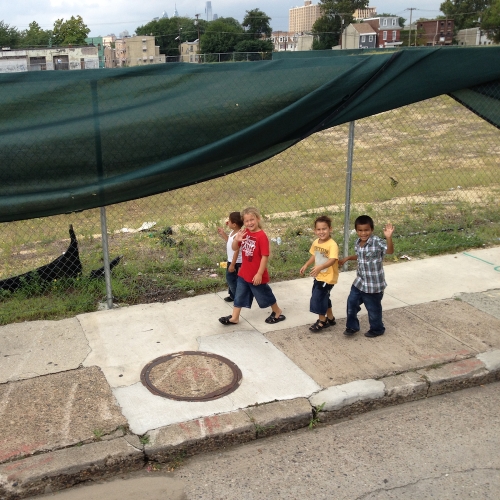
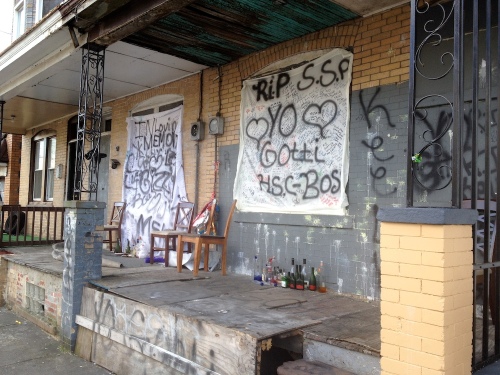
PP: You’ve a professional experience of the poverty, disrepair, vacancy and the destruction/burning of houses. Can you describe what you’ve witnessed in your work and how you’ve secured and watched properties burn never to be replaced? It seems your job — in real time — has tracked the decline of Camden.
GA: Many of the buildings I was shooting initially for teaching purposes are no longer standing. Anyone that does what I do for any length of time should start to inadvertently become aware of the developing issues and predict whats coming or whats soon to happen. I’ve watched the city disappear over the last 16 years. When you drive around and see vacant lots, you become aware that it was once a thriving community, with street lights and brick and mortar row homes lining the sidewalk. People lived here.
Now, whole stretches of fenced in empty lots do not even have the fences anymore, they have been torn out and cashed in at one of the many local scrap yards. You can hear huge sections of fence being dragged through the street — day or night. The sound of hammers and improvised hacksaws emanate from behind rows of boarded up windows, working to remove any type of metal with a high price per pound. One can often smell gas leaking from stolen basement pipes in vacant buildings, thieves are disinterested in even turning the gas petcock off. Used tires are everywhere, lining the streets like weeds. Plastic bags from the bodegas blow like urban tumbleweeds.
PP: Extreme poverty.
GA: At work, When we are out preplanning vacant row homes, we see needles, used condoms, the insides of ball point pens, lighters, baggies, piles of clothes, stacked mattresses, tinfoil “sculptures,” shit buckets, piles of feces in corners, the carcasses of what would have been a pet in the suburbs … I could go on with this list for a half hour.
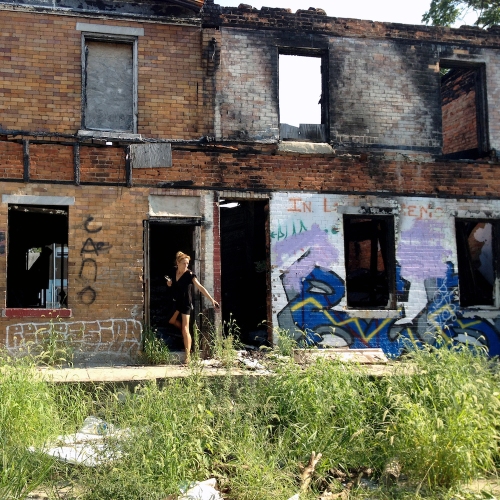

We speak to the neighbors, the mail man, the utility provider, squatters, prostitutes, everyone. We just assume the time is coming, you can just sense when a particular spot is going to burn. Then you’d catch the house, or the block, or the building, you turn the corner in the rig at 3am and the street is lit up like your on the surface of the sun.
Its always astonishes me, how it works. Not all of my peers are as tuned in I suppose, or they just prefer to ignore it. That would go for fireman working in any socioeconomically challenged urban city…
But, I think my artistic tendencies and growing up on a skateboard led me to observe closer. I can sorta relate a bit better, growing up in counter-culture mindset. I used to skate, bike, walk or drive around Philadelphia looking at everything from a skateboarding perspective. How could I creatively use the landscape to have fun on my skateboard? Now, I do the exact same thing, but in terms of forcing my way in and out of structures, in terms of understanding who or how many people might be living in a building that is supposed to have no one living in it. I’m constantly training myself to get a better understanding of how poverty affects people out here.
Where are they at? What are they willing to do or endure. I feel that everyone [in precarious or vacant houses] are my responsibility regardless of their job, tax bracket, or societal position. So I pay real fucking close attention and decide what I can and can’t do to make a difference. It’s best to see things up close so you know what you can safely do in the dead of night, maybe half asleep, when you need to be up on your game. We don’t get to warm up. We go full throttle, from a stand still-ice cold position.
The work kills our bodies. We might as well be the buildings were in and out of, becoming more and more structurally unsound over time. I mean fuck, I want to see my girls the next day too, so theres always this friction. I’m not sure exactly how to articulate what I see there, but its fascinating. Its also predictable and above anything else, a travesty. Sitting back is bullshit.
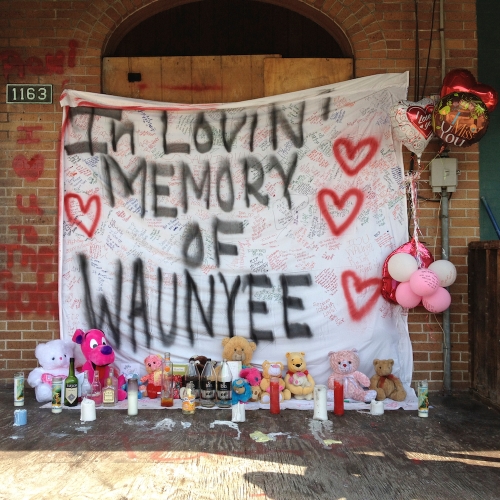

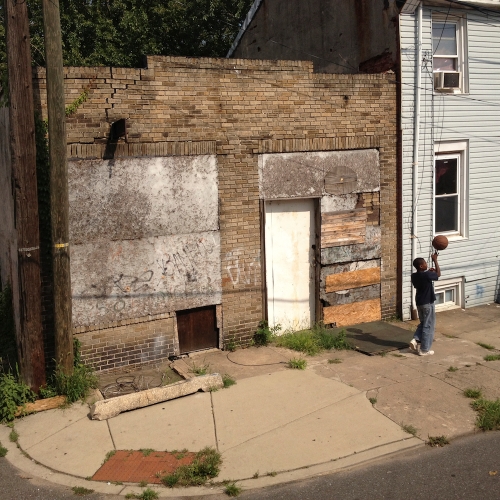
GA: I always say that Camden should have been Philadelphia. A lot of things and people have conspired both consciously and subconsciously over time, both with premeditation and without, to make this place what it is today. There’s so many issues its overwhelming.
I talk to the folks next door or nearby to where we are operating. It’s heartbreaking. Hearing a woman tell me she’s got kids in her house three doors down from where we just put a fire out. They knew it was coming, they saw squatters in and out, they saw addicts using the houses to get high and shelter themselves. They have perpetual anxiety about not if but when [their place might burn down].
There’s a documentary film called Burn, and one of the featured guys in it has a great quote, “I wish my head could forget what my eyes have seen during 30 years of firefighting in Detroit.” That poor bastard has seen some terrible things. I wish I could say I, or any of the guys I work with, were any different. This job can mess your life up, I watched it do it to friends, both mentally and physically. It’s a battle for sanity. We’re getting kicked from all angles, BUT I owe everything I have to the City of Camden Fire Department, and I try to earn that shit every time I go to work, and every time I take, or teach a class. We work hard for what we get, we do a great job, and I’m proud of the work we do.
Camden civilians see more fires than most fire departments.
PP: Fire is a symptom of poverty, right?
GA: I believe so. Our workload is indicative of that. It’s the same in other depressed communities — Detroit; Gary, IN; Flint, MI; Jackson, MS; Stockton, CA; East St. Louis; Bluefield, WV; Baltimore; as well as sections of Philadelphia, Chicago, Oakland, New Orleans. There are so many places dealing with poverty. It would be hard to argue that fire isn’t tied into a cycle of poverty.
PP: What do you colleagues think of your photography?
GA: I’m not really sure! I struggle to keep it separate, and I struggle to combine it. I have a lot of support from guys I spent years of my life with — they support me and it, even if they don’t get it. I’m sure there are guys who don’t know me too well who are not feeling it or very receptive. Some guys have talked to me about it and now understand. All I can do is keep on being me. I’m not looking to hurt, upset, take advantage or manipulate anyone. I want to throw-up when some one says I’m exploiting people. I’m far more invested in this town and its people.
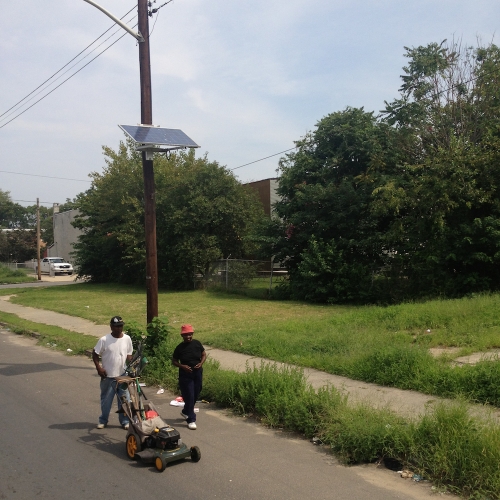
PP: What’s next?
GA: I’d like to make a book, Pete. One of these days, I hope to put together a book dummy.
I would also like to do shooting elsewhere. I’d love to find a grant that would allow me to do what I do in Camden, in other cities. I could go hook up with friends in other fire departments and make photos.
But honestly, I’m trying to adjust to a new role in my job. And be a father to my young daughter. My wife is soon to give birth to a second daughter, so time and energy are harder and harder to come by!
Hopefully next year, I’m going to find myself sitting on the co-op board for Camden FireWorks, a great South Camden artistic endeavor. Those involved hope to start some revitalization on South Broadway out of the old CFD Engine Co. 3 fire house. Heart of Camden acquired it and put a ton of time, energy and grant money into refurbishing it into artist studio spaces, gallery and printing press with a program of lectures and classes.

PP: Anything else you want to add?
GA: I hope that no one ever interprets my opinions, intentions or photography as negative toward Camden. I’m invested here. My father was a CMD fireman for 33 years and busted his ass through two riots and decades of a fire-load that would make most of today’s firefighters quit. I feel that the city looks like it does now by some twisted and fateful design. I give back in my own ways, and try to make Camden a better place.
I can’t get by with out my family, they are the best ever! Thanks Nicole, Maria, Lillian, and Lucia. You allow me to make art, make photos and constantly deal with my obsessive nature and all that comes with it.
I owe a ton more to too many of my friends and influences to write here but they know who they are. ARTNOWNY and the Philadelphia art scene are awesome.
Oh, and firefighters rule! We are here for you.
PP: Cheers, Gabe.
GA: Thank you, Pete.


